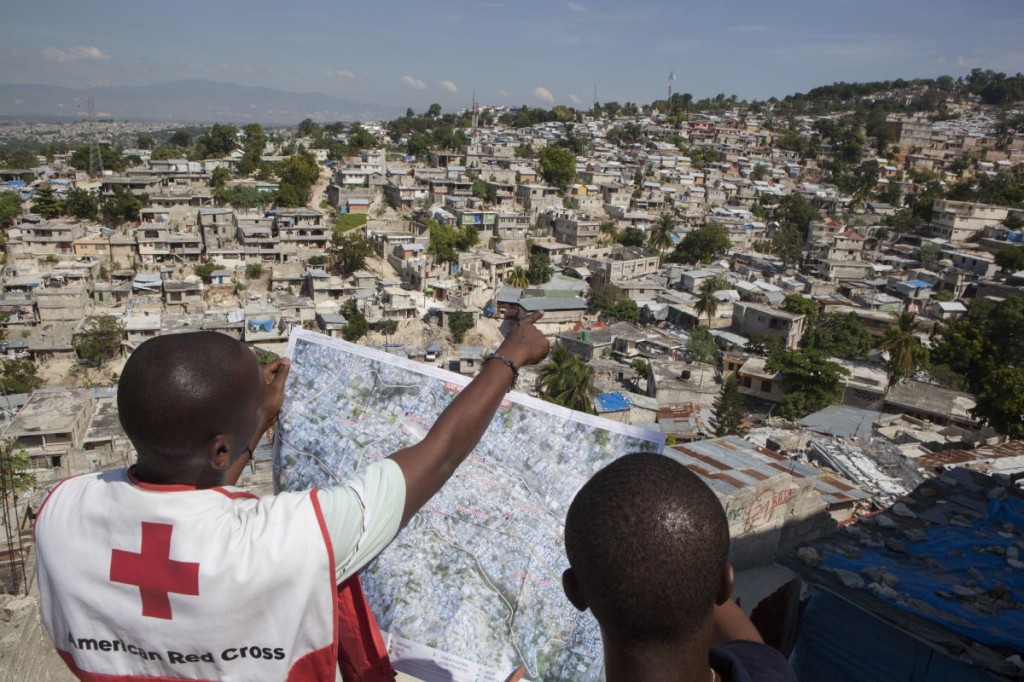Editor’s note: Today is the 3.5 year anniversary of the Haiti earthquake. To find the latest updates from Haiti, please visit this link.

November 2012: Claudy Jean Louis (left) and Jean Daniel Henrius (right) review a map Campeche, a neighborhood targeted by the American Red Cross for a community regeneration project.
Standing on a hillside in Haiti in late June, the contrast was stark from the view in the same place three years ago – only a few months after the 2010 earthquake. The view in 2010 was a sea of tarps and tents of people with no place else, similar to the makeshift shelters that covered parks, median strips and nearly every available inch of open ground.
Now, many of the people in these camps have been able to move back into repaired homes or into small wooden buildings. Many of the piles of rubble from destroyed buildings have been removed, and the streets and sidewalks are filled with people and vehicles. Outside Port-au-Prince in Mirebalais, a gleaming new white teaching hospital – also supported by donations to the American Red Cross – has brought greatly improved medical care to this rural area since its opening in March.
Make no mistake, tremendous needs still remain. One day, even as our group went through an area of buildings constructed by the UN with donations from the American Red Cross, we could see nearby a camp where people were still living under tents and tarps in the hot sun.
Shortly after the earthquake, an estimated 1.5 million Haitians were living in the various camps, some in dangerous areas on the sides of ravines. That figure is down to an estimated 300,000, and work by groups such as the Red Cross and the Haitian government continues to get people to safer and better places to live, whether rentals, new buildings or repaired houses.
One American Red Cross program is focusing on one area of Port-au-Prince and working with people in the neighborhoods on an integrated effort that includes places to live, greater access to clean water, ways to help people earn money and programs to enable people to save and to live in safer conditions. A key part of this program is talking with people in the neighborhood about what THEY want.
Ravines and hillsides that had once been filled with families living under tarps had been cleared, providing open spaces for more development. In the center of this neighborhood, a small open area was active with a soccer game one recent morning, with benches around the outside.
In several areas of this neighborhood, including the common area, stood tall street lights that were solar-powered. These were one of the requested priorities of neighborhood residents – something to provide more security and also to enable them to sit in the common area at night to talk with friends.
The street lights throughout the neighborhood provide light where there was once only darkness. They are just one example of the signs of real progress and the hope for the future in Haiti.
